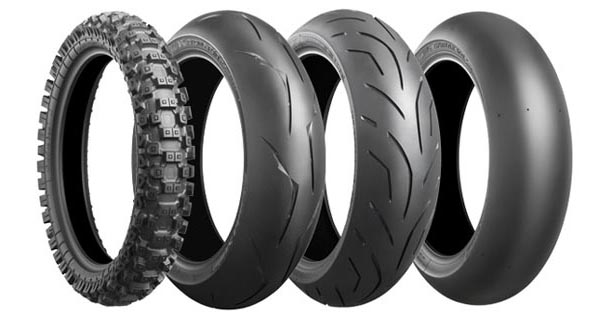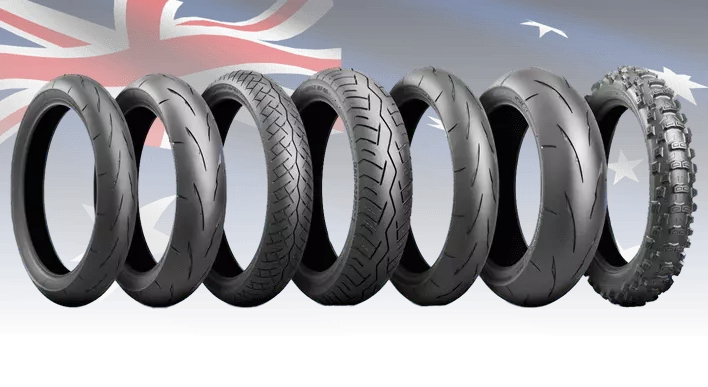Ensure ultimate safety on long rides with dependable Motorbike Tyres.
Ensure ultimate safety on long rides with dependable Motorbike Tyres.
Blog Article
Everything About Bike Tyres: A Comprehensive Guide for Enthusiasts
For motorbike lovers, understanding the complexities of their device's tires is a crucial element frequently neglected. This overview, 'All Concerning Bike Tyres', opens the detailed globe of tire types, dimensions, and specs, all directly influencing performance and safety.
Recognizing the Fundamentals: Different Kinds Of Bike Tyres
On the planet of motorcycling, tires play an essential duty, not only in guaranteeing a secure experience but likewise in improving the total performance of the bike. They are available in different types, each created for certain riding problems and performance demands.

Then there are dual-sport tires, which supply an equilibrium in between on-road stability and off-road grip. Lastly, racing tires, used for track racing, give maximum grasp yet have a very short lifespan.
Comprehending these types and their details functions aids riders select the ideal tyre for their riding style and conditions, therefore ensuring optimal efficiency and safety. Such understanding forms the structure prior to diving right into tyre dimensions and specifications.
Just How to Translate Your Motorcycle Tire Size and Specifications
Having a firm understanding on the various kinds of motorbike tires leads naturally to a deeper understanding of their dimensions and requirements. This understanding is critical for preserving optimum efficiency and safety. The tire's dimension and specifications are generally shown on the sidewall. The first number stands for the size of the tyre in millimeters. The second number, following a reduce, is the element ratio or the elevation of the tyre's sidewall shared as a portion of the size. The last number, if it's preceded by an 'R', suggests the rim diameter in inches.
Specific letters might adhere to these numbers, symbolizing rate rating and lots index. 'M' represents a maximum rate of 130km/h, while '70' shows a lots carrying capacity of 335kg. Such detailed information can significantly influence a motorcycle's efficiency. Therefore, it's essential for riders to understand how to translate their bike tyre size and specifications.
Choosing the Right Tyre for Your Riding Style and Problems
Choosing the best tyre for your bike is not a decision to be taken gently. It's critical to think about the sort of riding one does most typically; whether it's travelling, visiting, off-roading, or sports riding, each design requires a various kind of tyre. Sporting activity cyclists may choose for performance tyres that use superb grip and speed, while commuters might like tyres made for longevity and convenience.
For damp and snowy problems, tires with deep tread patterns and softer rubber compounds are perfect as they give much better hold and traction. Ultimately, recognizing your riding design and the conditions you'll face assists in choosing the ideal tyre, enhancing both safety and performance.
Tips for Keeping Your Motorbike Tyres for Ideal Efficiency
Appropriately preserving your motorbike tires substantially increases their performance and long life. Normal inspection is a vital part of this procedure. Cyclists must search for signs of deterioration, such as cuts, slits, or uneven wear patterns that might show placement concerns.
Cleaning up is another essential facet of tire upkeep. Removing debris and gunk not only improves the tyre's look however also avoids premature wear. A mild scrub with a soft brush and soapy water is typically sufficient.
The duty of tyre turning can not be marked down. By rotating the tires' placements, one can guarantee even wear and prolong their life expectancy.
Lastly, the motorcyclist needs to constantly keep an eye on the tyre's walk deepness. A superficial walk can jeopardize hold, bring about unsafe riding problems. To this end, many countries have legal minimum walk midsts, and motorcyclists are encouraged to follow these regulations for security.
The Influence of Tyre Stress on Your Riding Experience

Understanding Tire Pressure Characteristics
While it may appear an insignificant element to some, tire pressure plays a crucial function in the total riding experience of a bike. Over-inflated tires can make the experience severe and rough, while under-inflated tires can lead to inadequate handling and boosted fuel consumption. Tire stress additionally impacts the tyres' contact patch - the location of the tire that touches the ground.
Changing Pressure for Performance

(Dirt Bike Tyres NZ)The excellent stress varies with tons, roadway problem, and riding style. For ideal efficiency, it's vital to consult the manufacturer's referrals, typically engraved on the motorbike or in the owner's manual.
Routine checks utilizing a trusted pressure scale are crucial. As weather condition affects pressure, modifications need to be made when tires are chilly. Therefore, understanding and using appropriate tyre stress modifications considerably enhance a motorcyclist's experience, promoting safety and performance.
When and How to Replace Your Bike Tyres Securely
Making sure the security and efficiency of your trip, regular assessment and prompt replacement of motorbike tires is a job of utmost relevance for every single biker.
Tyres ought to commonly be replaced every 5 to 6 years, or when the tread deepness gets to 2mm. Nonetheless, aspects such as driving habits, road problems and tire maintenance can affect this duration. It's vital to consistently check tires, trying to find signs of damage, slits or defects.
Changing a tyre requires unique tools and expertise. The brand-new tyre should be correctly aligned and inflated to advised pressure.
It is typically suggested for less knowledgeable riders to have tyres replaced by specialists. This makes sure security and increases efficiency, emphasizing the significance of tire upkeep in bike usage.
Conclusion
Finally, understanding the intricacies of motorcycle image source tires, from kinds to dimension requirements, plays an important duty in improving riding experiences. Making notified choices based upon riding design and conditions, coupled with proper upkeep and awareness of tire pressure, can considerably boost efficiency and security. Lastly, knowing when and just how to replace tyres makes sure motorcyclists can continue to appreciate their motorbike experiences with miraculous confidence.
Report this page